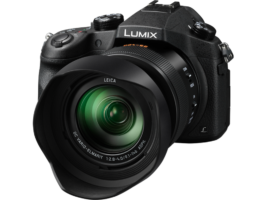Without doubt, the Canon 5D MKII and the 7D are both ‘game-changers’ in photography, pointing the way to where more development is headed. The speed bump is that there’s a long way to go. Be prepared to go through multiple new models. Oh, and make sure your bank account is healthy.
Ten or so years ago, I used to kid my fellow pro friends that we were just making movies as we’d finish a staccato, rapid-fire session of photographing a sequence of polar bears sparring or eagles swooping to catch a fish on the sea surface. By that time, even though we were all still using film, motor drives had advanced to where frame rates of 10 or so frames per second were not uncommon. Gone were the days of anticipating action and squeezing off that perfect, single shot.
What we had, I told them, were basically movie cameras. Though movie cameras took 24 frames in a second, I could see the day wasn’t far off when successors to these very cameras would sport frame rates that fast, enabling you to just keep your finger on the shutter, let the action complete itself, and then select the best one or two photos from the sequence.
Well that time has come, driven by the convergence of still and video media enabled by the Web. I think it’s generally accepted that people are reading less and watching video more. Stock photographers see an opportunity in selling stock video clips to bolster the disastrous decline in the stock industry in still images. Newspapers are even expecting their photographers to come back with video as well as stills on the same assignment.
So it’s a huge leap forward to have hybrid cameras that can take high-quality HD video along with superlative still photos. There is no question that it keeps the amount of equipment down that has to be carried into the field.
But these cameras, good as they are, are not a substitute for a well-designed dedicated video camera for news gathering, serious documentary work or anything that requires a quick, on-the-hoof type of shooting. To sum up the main reasons:
- You still need a tripod for many shots, especially establishing shots. And it needs to have a fluid head for steadiness. Which means that until someone comes up with a hybrid tripod to shoot both stills and film, you’ll have to carry two tripods with you. This obviously counterbalances the advantage of ‘one camera – two modes’.
- No variable-speed, motorized zoom means you will have to plan your shot so that it doesn’t require any such technique. This is fine if you want a ‘retro’ look — an echo of the days before zoom lenses in the movies where the only camera movements were ones like pans, tilts and dolly shots.
- The fact that there is no effective autofocus either (remember, these units DO autofocus, they just do it very sluggishly and only when the light is bright enough) also reduces the effectiveness of use for documentary/news productions.
- The viewfinders, while bright and high resolution, are deficient in bright sunlight or for critical focusing. They also get tedious after long periods of use, especially for those with glasses. There is an evolving cottage industry of add-ons to help overcome this, but most make the camera much more cumbersome (and expensive).
- Having good control over the sound recording requires separate level controls, mixers, microphone jacks or a completely separate sound recording device whose recording is later synced with the video in post-production.
But there are advantages. Some are obvious and others not so obvious:
- State-of-the-art still images are possible, the quality limited only by the skill of the photographer.
- Extremely high-quality video can be shot in a small, lightweight, familiar form-factor.
- The lenses you’ve hocked your IRA to get can be used quite well for either still or video.
- Using one camera for both stills and film open new possibilities to increase your productiveness in the field.
- Using the same flash card for either media type is a great convenience. And flash cards are far better than tape, convenience-wise. Being able to speedily download each clip as a separate file, allowing you to quickly find the scene you need is a real time-saver. Downloading an hour’s tape to your computer takes, well, an hour. With a card, it’s just minutes.
I’ve not dealt with a lot of the minutia of either of these cameras: no pixel-peeping or discussions about the evolution of the Custom Functions, etc. My intent is just to give a broad overview of what these cameras are and what they are not.
If you are needing an extremely high-quality addition to your camera bag, either of these units are worth the investment. They are worth the price as still cameras alone; the video is a freebie. If you want a unit that enables you to get video footage that you otherwise wouldn’t be getting because you’re unlikely to drag around a dedicated video camera on a shoot, either of these are your answer.
Neither of these cameras will replace a pro-quality, dedicated video camera for all types of video shooting. So if serious video production is needed, I’d advise you to keep your trusty video camera close by and use the 5D MKII and 7D to supplement it.
Otherwise, these are excellent, pro-quality cameras that will extend your capabilities as a photographer.
For a slightly contrarian conclusion, see PF Bentley’s recent article over at the excellent Digital Journalist. He swears he’ll never use a small-sensor video camera again, despite the shortcomings (and more) that I’ve listed here. By the way, check out their Platypus Workshops if you’re interested in honing your skills in video production.
